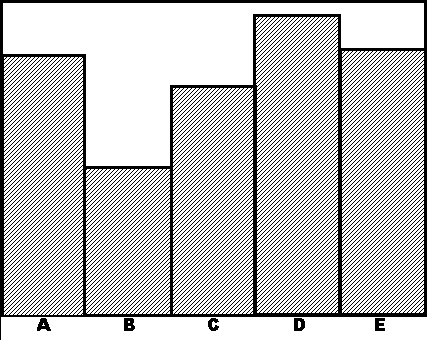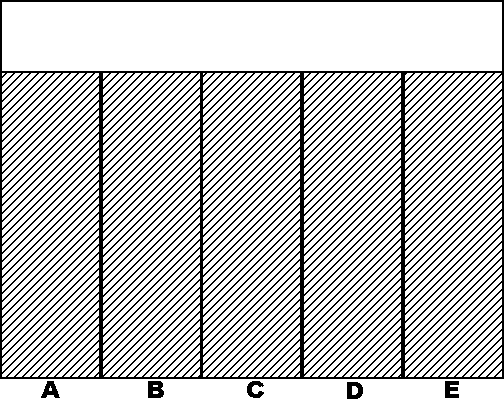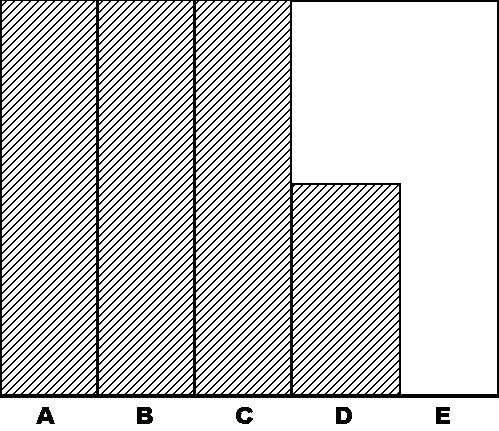
[The Montana Professor 1.3, Fall 1991 <http://mtprof.msun.edu>]
Mike Parker
It would seem to be a paradox. For years, progressive trade unionists have demanded that workers have more say in the operation of their factories, offices, and companies. We have argued that unions are not simply about five cents more per hour; unions are about the entire lives of the people they represent. To improve the lives of working people we need good working conditions, dignity on the job, and control over our jobs. For those same years, of course, companies have resisted workers' demands for more control over their jobs and union attempts to widen the scope of negotiations. At times, disputes over what management calls "management rights" have erupted in bitter battles.
But, today, most U.S. corporate executives now claim to champion the idea of "participative management" to provide workers with significant involvement in workplace decisions. At the same time many progressive unionists are cast in the role of unenthusiastic "foot-draggers." Many unions are opposing these new schemes and seem to be battling the very concepts that they fought for in other times. Is this a paradox? Have the sides switched?
It makes even less sense when one charts the power of labor over the past decade. Unions are now at their weakest position since the 1930s--by any measure. In the last twenty-five years U.S. union membership as a proportion of the workforce has dropped from one-third to under 15 percent. Corporate diversity, transfer of work to management, outside contracting, technology, and legal support for use of strikebreakers have all eroded union power. One sign of the times is the ability of AT&T or a Bell System to operate for months during a strike with little awareness by the public. Even with a Democratic administration and Congress in 1977-78, labor's declared priority, "labor law reform" legislation to provide fairness in organizing, died in Congress. Since then, as we all know, the climate for organized labor has gotten much worse, with major losses in the courts and at the National Labor Relations Board. The government has actively engaged in and endorsed union-busting. From PATCO to the Eastern Airlines strike, government policy has been consistent. Given the weakness and defensive position of the labor movement, how can it be that the union movement has now gotten management to accept the union position?
Here is one more paradox especially relevant to university faculties. In business and industry, management is actually demanding that unions accept programs built around the worker participation concept. At the same time, in the academic world, management is introducing methods to reduce the level of faculty involvement. Is university management really going in the opposite direction from the management of the auto industry?
These seeming paradoxes dissolve quickly when we understand that the issue is not participation at all, but something entirely different. Managements, in both private industry and universities, are waging a campaign to gain or regain control over the entire decision-making process within their respective institutions.
On the campus, an administration asks itself how it can gain control. First it goes after the barriers to its control. The administration attempts to reduce the power of the union, and to disempower or eliminate any other institutions through which university employees have traditionally exerted some degree of control over university policy. These institutions include faculty senates, tenure, and peer review processes.
As I am sure you are well aware, most people outside the education industry do not understand the role of your special institutions. Many people believe that tenure is merely a selfish scheme to protect the lazy from hard work and accountability. University administrators and various politicians often advance their interests by reinforcing these beliefs. Similarly, manufacturing management and the media would have you believe that traditional union institutions like seniority and work rules are irrational regulations that reduce efficiency as they protect featherbedding and the lazy at the expense of the competent and hard-working. In fact, in academia or in industry, tenure and seniority are the primary institutions that give people some control over their jobs, individual bosses, and management structures. It may be easy for outsiders to misunderstand or even ridicule these institutions, but take them away and you substantially change relationships in the workplace.
These institutions of employee control are now the subject of a massive attack. The bitter struggle over control of the workplace is still going on. Some of the tactics are new (or rediscovered from the 1920s). Industrial managers and university administrators alike have found that they can offer "participation" to get control.
They frequently say, "Our door is always open, we are glad to hear what you think." And that is true. They would like all the information they can get to make informed decisions. You can participate any time you want--indeed, you are encouraged to provide input or information--as long as you do not control. In fact, your information is vital to their maintaining control. There is no paradox here. And there is no substantial difference between the trends in the university and in industry. The management drive in both is to offer participation as a way of taking or maintaining control.
International management consensus is now developing on how to maximize management control. It takes different forms, depending on where it is applied. It has different names: "participative management," "Japanese management," "team concept," "lean production," "total quality management." I prefer to call it "management-by-stress." I call it that not as a joke, but because stress, in the sense of pressure or tension, is the central dynamic that actually regulates the system. While perfected by Japanese corporations, most notably Toyota, contributions came from many countries, including W. Edwards Deming from the United States. It does not, as many would like to believe, depend on Japanese culture. It is now widely used in this country by American-managed companies. I will first describe the system briefly as it is implemented in the auto industry and industrial production. We can then draw the parallels to the university setting.
Imagine an assembly line. Put some lights above every work station--red, yellow, and green. At each station, the operator has a cord to pull. When everything is going fine, the light will be green. When the person at that station has some difficulty, she will pull the cord, and the light will turn yellow. If the problem is not solved within several seconds, the situation becomes an "emergency" and the light turns red. It is a very simple system. In fact, most of the techniques in this system are disarmingly simple.
If you were the boss, how would you want to see those lights? Green, right? That's how we've been brought up to think; we want everything running smoothly. And to make sure that things do run smoothly--"in the green"--you will make sure that you have some cushion at key points just in case.
If you think that way, though, you are not qualified to be a manager in this system. First, you do not want everything green because "all green" does not point you toward any problems. In fact, green probably means that there are surpluses in the system. The system may be too easy on workers. How do you know that people are working up to their capabilities?
The way you find out is to crank the line up a bit until you get some yellow lights. Presumably some are not working up to their full capabilities. You make sure by focusing attention on them. You have found the weak links so you fix the problem, whether it is a mechanism or a person. Then what? Then you crank the line up a bit more. So now there are more yellow lights--more people working up to just past their current capabilities.
Suppose you still see some green lights. What do you do? You say to yourself that the person whose work station light is always green obviously does not have enough to do. So you add additional operations until those lights go into the yellow. Managers under this system want to balance and rebalance the line so that everything comes up just on the edge of yellow.
Notice here the relationship of participation and control. The worker on the line is invited to participate in a new way. It used to be that only management stopped the line for difficulties. Unless someone was dying, stopping the line could be a fireable offense. Certainly no hourly employee ever stopped the line simply because she was having trouble keeping up. Now the worker gets to participate by making what was a management decision in the old system. But that participation allows management to focus on the weak links. Thus the participation permits tighter management control.
Does this only apply to an assembly line, where you can crank up the line speed? No. The same method can be applied to any team of people working on a particular job. One way is simply to add additional tasks. Another is to remove one of the people and tell the rest of the group that they are still expected to keep up the workload. This is management-by-stress: keep pushing the system until it is so stressed that its weakest points are revealed. Focus attention on these and then continue the stressing operation. Remove all "surplus" resources to push everything and everyone to the limit.
Does management really think this way? A popular management term these days is Kaizen, Japanese for "constant improvement." Most of the techniques for making improvements are simple enough. But how do you get people to keep speeding up themselves? Here is an example from the Kaizen Communique, a publication of an American institute that trains American management. The newsletter draws on the originator of the Toyota Production System, Taichi Ohno, to explain "how top management can deliberately make sure that Kaizen is occurring."
For example, let's suppose that a start-up department has the requirement to make 100 cars per day. Mr. Ohno would give the department the resources to make 90 percent of what was required. Specifically they received 90 percent of the manpower required, 90 percent of the space, 90 percent of the equipment, etc.
...As time went on, the department team would find problems or obstacles that would be resolved or overcome through Kaizen activities.... As soon as a no overtime equilibrium was met, Mr. Ohno would again remove 10 percent of the resources./1/
Management structures the situation not by improving working conditions or making the job easier but by doing the opposite--applying pressure. Management does not need to have the solutions as to how the work can be done under these circumstances of deprivation but depends on the workers to increase effort and figure out shortcuts just to survive and do a good job. Unfortunately, as soon as workers do solve the problem and they "reach equilibrium," they will be "Kaizened" again.
Since participation is a critical element, the system works much better if workers believe that it is all voluntary. Did you ever notice how vacancies at work do not get filled? Some may believe that this is a result of management incompetence. However, in some management seminars the first rule is, do not fill a vacancy immediately; let the remaining workers cope. If the people in a department take their jobs seriously, they will find a way around a vacancy. Managers take advantage of the fact that people try to do a good job, and will work hard while thinking that the vacancy is only a temporary situation. In fact they may well be establishing the precedents to make this vacancy permanent--or, if it is filled, to be able to add on work.
This special meaning and use of participation can be seen in the related issue of "quality." We have all heard about the new emphasis on quality in manufacturing, quality in service, and quality in education. In the dictionary, and in our normal use, the word "quality" in this context means "excellence." But in management books and seminars on the subject they are very insistent that this is the wrong definition. "Quality," they say, is "conformance to requirements or specifications." They try to connect to our normal understanding of the word by arguing that the requirements or specifications are generated by the customer so this means that quality is giving the customer what he or she needs or expects.
But the reality of large institutions and organizations is that the end customer rarely sets the actual specifications or requirements. Customers purchase a package set by a marketing department, whatever the actual name. The specifications are interpreted and passed through from upper level to lower levels. In other words "quality" defined as "conformance..." ends up meaning "do it exactly the way the boss tells you." And "higher quality" means the boss setting still more specifications and you following still more detailed instructions.
One theme in the quality literature is "reduction of variance." If you process each component in exactly the same way then you are more likely to end up with the final product within specs. But reducing variability means taking out of the process alternatives that require judgment and thus moves real decisions to a higher level. "Standardized work" is the name for this result. Every person's job is broken down into the smallest discrete elements and carefully documented and approved. Jobs are always done in exactly the same way. In manufacturing, if standardized work calls for holding with the left hand and tightening with the right hand, then that is how it is to be done.
I see from reading Academe that academic management is pushing the same notion of "quality" in education: more effective "supervision," more top-down control of the curriculum, and more standardization of what is taught. All of this is in the name of quality to the customer. It is no accident that this comes particularly from the new breed of "career administrators" who see managing the university as essentially the same problem as managing a manufacturing company./2/
Management is very clear about the correct form of participation in "teams." Here is an example from the training program used at the Mazda plant in Michigan.
Suppose five people are working together in a team. Because it is an assembly line all jobs must be done in the same period of time. Individual members' jobs may not require the full time period. Team members get to participate in a process called "rebalancing." Mazda provides this diagram of the initial situation:

Given the words "teamwork" and "rebalancing" one might think that the result should be something like this next diagram that Mazda indicates is sometimes the result of team deliberations.

But, Mazda explains, this is wrong. The correct resuit should be:

The first principle of "rebalancing" is consolidation of "idle time." This way we can remove one person from the team. From the articles I have read in Academe and the discussions I have heard at the meeting of the Collective Bargaining Congress, I would suggest that you, too, have been urged to participate in "rebalancing" your jobs.
For management to get more control over the whole work process, it needs to reduce the institutions that represent different interests. In most occupations the only institutions that provide people with a measure of genuine control over their jobs are their unions. Faculty members possess additional institutions of faculty governance, and that is why they too must come under attack while the rhetoric of participation is on the increase.
Unions or faculty senates can be attacked in may ways. They can be decertified or disbanded, marginalized or trivialized, or they can be co-opted. These methods vary, but they are all part of management's offensive against any control by labor. It is not just our institutions of control that are under attack but all the benefits and working conditions that we have won through them. Hence the attack on benefits programs, the use of two-tier employees, part-timers, outside contracting, and employee flexibility in every occupation from office worker, to assembler, to professor, to airline pilot, to nurse.
At stake is not just this or that benefit, the number of members in an organization, or the bottom line in a particular contract. We are talking about the quality of working life and human life.
In Japan they are now debating a phenomenon called Karoshi--sudden death from overwork./3/ It affects all occupations. One Japanese citizens group counts more than 1,500 cases of Karoshi in the last few years. A Japanese Ministry of Labor survey of 15,000 workers found that two-thirds reported regular feelings of physical exhaustion and nearly three-fourths complained of job-related mental strains.
This is where management-by-stress or "constant improvement," as they call it, leads. Some have compared this model of work to Olympic training. What does it mean to run the rest of our lives as though our jobs were an Olympic training program? We are actually talking about the future of our society, about how you and I and our children will live and survive and what we value as life's primary goals. We can control our future only through our own institutions. We cannot leave it to management, no matter how benevolent may be its face or how much it mystifies us with the rhetoric of participation.
Notes
Masaaki Imai, Kaizen Communique 2.3, Winter 1988-89. Published by Kaizen Institute of America, Camarillo, CA.[Back]
See, for example, Thomas McDonald, "Governance on Trial," Academe, November-December 1987.[Back]
Japan Times, 1 November 1990.[Back]
[The Montana Professor 1.3, Fall 1991 <http://mtprof.msun.edu>]